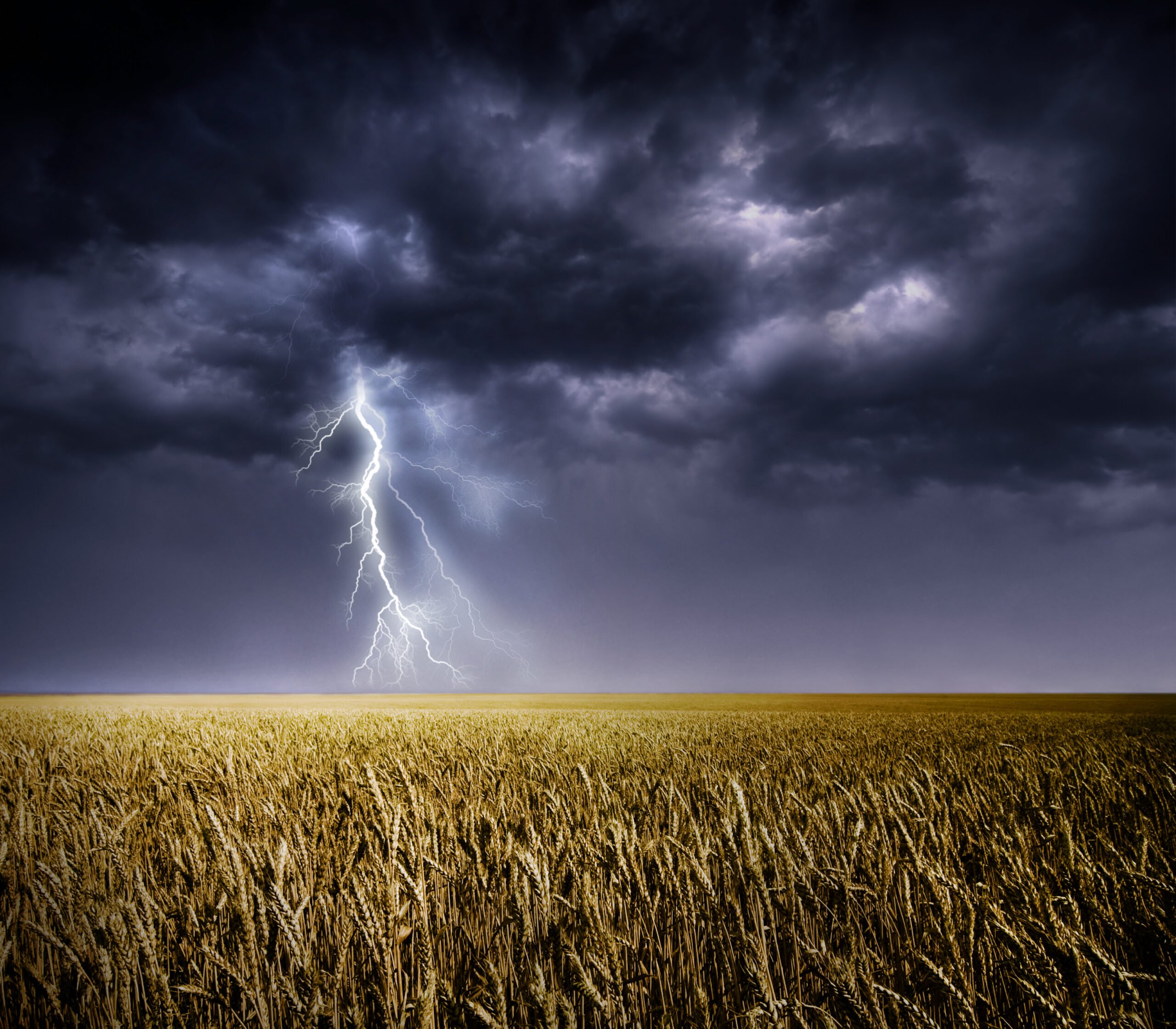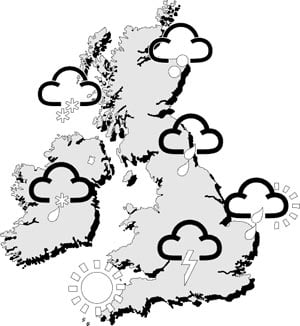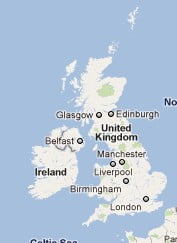The Urban Heat Island (UHI) effect makes the centres of towns and cities warmer than the surrounding countryside, especially at night. This is mainly because all the brick, concrete and paving in a city warms up during the day, and then retains its heat for several hours, so helping to keep the city warm as night comes.
The graph below shows temperature over a couple of days in September in the middle of Reading (dark blue) and in a rural village (light blue) about 6km north of Reading. For this period, the skies were clear and the wind was light, allowing the temperature at Sonning Common to fall quickly after sunset.
However, the Reading city centre temperature fell less rapidly, because of the UHI effect, so that it remained 3 or 4 degrees warmer than Sonning Common during most of the night.

On the other hand, the UHI effect is smaller when nights are cloudy and when it is windy. The graph below shows a comparison of temperature the same two places for a couple of very cloudy, rainy, days in October. Because clouds stop heat escaping from the ground, the temperature doesn’t fall much after sunset, and there is only a degree or so difference between the rural village and the city centre.

You can easily make the same sort of comparisons, and shown the UHI effect, using WOW.
The Met Office WOW website http://wow.metoffice.gov.uk is the result of a collaboration between the Met Office and the Royal Meteorological Society, and is a platform for weather observers around the world to upload and share their data.
Aim
- To use archived weather station data to show the development of an Urban Heat island.
- To understand when Urban Heat Islands form.
The advantage of using archived data from a site such as WOW is that a date can be selected when weather conditions were appropriate for urban heat island formation, and local data can be found.
Differentiation
Depending on ability, students could be given help choosing locations and/ or dates for the study. More able students could use several sites in and around an urban area.
Background Information for Teachers
Urban Heat Island Introduction
Supporting PowerPoint presentations can be found here and here.
and from MetMatters Urban Heat Islands
Required
Students will require access to the internet.
Choosing locations
Students should select two locations, one in an inner city area and one in a rural area just outside the city.
They might like to make sure that the sites they choose are submitting high quality data (for example, use the ‘filter’ drop down menu to select ‘official observations’ have the best data).
Students could use the satellite view on Google Earth to check the land use of the place where the weather is being recorded.
Advanced students might like to use an OS map to check whether there is a substantial height difference between the sites, and should consider whether this will have an effect on the temperatures recorded.
Choosing a Date and time
The Urban Heat Island is biggest:
- At night (before sunrise)
- In the summer
- When there is little or no wind (<5m/s)
- When the sky is clear
- When the weather doesn’t change through the night
How to Use WOW
- Go to the WOW website wow.metoffice.gov.uk
- Zoom in to find appropriate pairs of weather stations (perhaps in your area), one urban and one rural within 10km of your urban site. Click on them and make a note of their Site name.
- Click on the urban weather station.
- A pop-up box will appear, giving you some information about the site.
- Click on ‘View Full Observation’ and then on either ‘table’ or ‘graph’.
- You may like to change the tick boxes under ‘show filters’ such that only Air Temperature is selected, and alter the date range shown to choose a summer period.

- Look for a period of a few days in that month when the temperature difference between night and day is big – this usually means it is clear and with only light winds. In this graph, the 28th August stands out as a time when an UHI might be expected.
- Select that period in the start and end calendars.
- Get a graph from the rural station of just those few days
- Next enter the name of the nearby urban station in the ‘compare to’ box, and update the graph.
- This should show temperatures at both stations so that you can compare them.

- Look to see how the difference changes over the course of the days you have selected. Can you see the UHI? What time of day is it biggest? Smallest?
Plenary
Use the second PowerPoint presentation above.
Ask students to line up across room as a continuum. Students should stand at the left if they think their experiment does provide evidence for an urban heat island, and the right if they think it does not, or somewhere in between.



